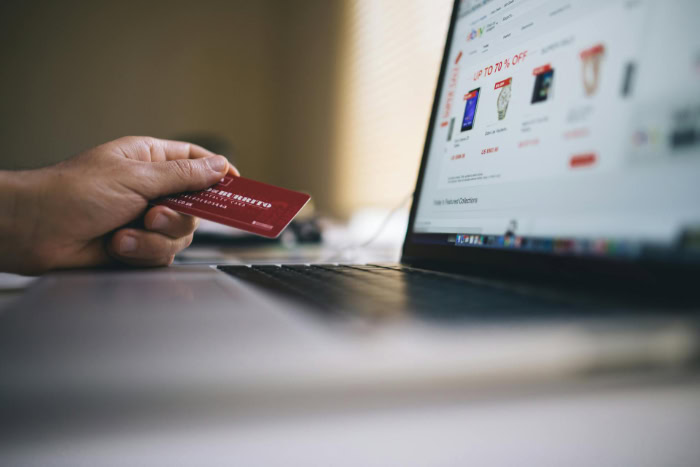What Is Tokenization? The Secret to Safer Transactions

Tokenization is reshaping how we approach security and ownership in our modern digital age. By replacing sensitive or valuable data with unique, non-sensitive substitutes known as tokens, it provides a powerful safeguard for personal and financial information while unlocking new opportunities for digitizing assets.
From protecting your credit card details during online transactions to enabling fractional ownership of real estate or art, tokenization has applications that touch nearly every aspect of modern life.
Understanding Tokenization Fundamentals
Tokenization involves replacing sensitive data, such as credit card numbers or personal information, with randomly generated tokens. These tokens hold no intrinsic value, making them meaningless to anyone who intercepts them without access to the original information.
For example, when a customer makes an online purchase, their credit card number can be replaced by a token that identifies the transaction without exposing the sensitive details. Similarly, real estate deeds can be digitized into tokens, enabling easier transactions and fractional ownership while maintaining security.
The process ensures that the original data remains securely stored in a centralized or decentralized system, such as a token vault. Tokens are then linked to this data through a mapping system, enabling authorized parties to retrieve the information as needed.
The ability to replace sensitive information with secure tokens while preserving functionality has made tokenization a versatile and valuable solution.
How Tokenization Works
The underlying process of tokenization involves several critical steps aimed at ensuring both security and usability. First, the data is identified and classified, focusing on the sensitive information that requires protection.
Next, the system generates a token, which is typically a random series of characters or numbers that acts as a placeholder for the original data. This token is then mapped to the actual data and stored securely in a token vault or database.
The vault operates under strict governance protocols to ensure that access to the original data remains tightly controlled.
A governance system is often used to regulate how tokens are created, stored, and accessed. This adds an additional layer of security, preventing unauthorized access or breaches.
The result is a system where tokens can be used in various processes, such as transactions or reporting, without exposing sensitive information. As organizations adopt tokenization, the role of these secure systems becomes crucial in maintaining compliance with data protection regulations and industry standards.
Tokenization vs. Encryption
Although tokenization and encryption are often mentioned together, they serve distinct purposes and operate in fundamentally different ways. Tokenization involves replacing original data with a token that has no value or meaning outside the system in which it is used.
Importantly, the process is irreversible unless one has access to the mapping stored within the token vault.
Encryption, on the other hand, transforms data into a scrambled format using an algorithm and encryption key. This process is reversible once the appropriate decryption key is applied.
While encryption is highly effective for protecting data at rest or in transit, it is often less efficient for real-time applications, such as payment processing, where tokenization excels due to its simplicity and speed.
Tokenization is often preferred for applications where sensitive information, like credit card details, must be processed securely without being exposed. Encryption, however, remains essential for securing data stored in larger systems or databases.
Together, these methods provide organizations with robust tools to tailor their data protection strategies to specific use cases, ensuring that sensitive information remains safe without compromising operational efficiency.
Key Applications Across Industries

Tokenization has become a transformative technology across various industries, addressing challenges in data security, financial innovation, and even artificial intelligence. Its ability to protect sensitive information while enhancing operational efficiency has made it a preferred solution for businesses and organizations striving to modernize their practices and comply with regulatory standards.
Data Security and Compliance
Regulators and organizations are prioritizing measures to protect sensitive information, and tokenization has emerged as an effective solution for data security and compliance. In industries such as payment processing, tokenization is widely used to meet stringent standards like the Payment Card Industry Data Security Standard (PCI-DSS).
By replacing credit card numbers with tokens during transactions, businesses can reduce the risk of data breaches while ensuring compliance with industry regulations. This approach limits the exposure of sensitive information, as tokens are meaningless to unauthorized parties.
Beyond payment processing, tokenization plays an important role in meeting global privacy regulations such as the General Data Protection Regulation (GDPR) and the California Consumer Privacy Act (CCPA). These laws require organizations to safeguard personally identifiable information (PII) and limit its exposure.
Tokenizing sensitive data allows companies to provide services and analyze information without compromising the privacy of individuals. By keeping the original data stored securely and out of reach from unauthorized access, tokenization supports businesses in achieving compliance with evolving data protection laws.
Asset Tokenization in Finance
The financial industry has embraced tokenization as a tool to digitize and democratize access to valuable assets. Through asset tokenization, tangible and intangible assets are represented as digital tokens on secure platforms, allowing for easier management and trading of these assets.
A prominent example is fractional ownership, where high-value assets like real estate, fine art, and commodities can be tokenized into smaller units. This process makes it possible for individuals to invest in assets that were previously out of reach due to their cost, creating opportunities for broader participation in financial markets.
Tokenized securities represent another significant advancement in finance. Stocks, bonds, and other financial instruments can be digitized and issued as tokens, simplifying traditional processes and allowing for faster and more efficient settlements.
Automation enabled by smart contracts also reduces the need for intermediaries, lowering operational costs and improving transparency. As tokenized financial assets gain traction, they have the potential to enhance liquidity in markets that were once considered illiquid.
Natural Language Processing (NLP)
Tokenization is not limited to data security or finance; it also plays a foundational role in natural language processing (NLP), where it is used to prepare text for machine learning and artificial intelligence applications. In NLP, tokenization refers to breaking down large pieces of text into smaller units, such as words, phrases, or subwords, which are easier for algorithms to process and analyze.
This segmentation allows machines to better understand the structure and meaning of text data.
Word-level tokenization splits text into individual words, while subword tokenization breaks words into smaller, meaningful components. Each approach has its advantages, with subword tokenization often providing better performance for languages with complex morphology or for tasks involving rare or unknown words.
By enabling machines to more effectively interpret and process language, tokenization enhances the performance of applications like machine translation, sentiment analysis, and conversational AI.
Benefits of Tokenization

Tokenization has emerged as a versatile solution offering significant advantages across industries. By replacing sensitive data with secure tokens or digitizing valuable assets, it not only enhances security but also streamlines processes and fosters innovation.
Enhanced Security
One of the most significant advantages of tokenization is its ability to improve data security. Sensitive information, such as credit card numbers or personally identifiable data, is replaced with unique tokens that hold no intrinsic value.
Even if a token is stolen, it remains useless without access to the original data stored in a secure system. This dramatically reduces the risks associated with data breaches and ensures that organizations can continue operations without exposing customer or organizational information to unnecessary vulnerabilities.
Additionally, tokenization can help businesses comply with regulatory standards while reducing the scope of compliance requirements. For example, companies subject to PCI-DSS regulations can minimize their compliance efforts by using tokenization to protect payment data.
Since tokens do not qualify as sensitive information, organizations can limit their exposure to sensitive systems, reducing both risk and compliance-related costs.
Operational Efficiency
By simplifying processes and automating tasks, tokenization significantly contributes to operational efficiency. In the financial sector, traditional transaction settlements often involve multiple intermediaries and extended timelines.
With tokenization, transactions can be executed more quickly, improving settlement speeds and reducing processing times. This is particularly valuable for industries like securities trading, where real-time settlements enable greater market responsiveness.
In other domains, like natural language processing (NLP), tokenization reduces the manual effort required to prepare data for analysis. By breaking text into smaller, machine-readable units, it enables faster and more accurate processing for applications like chatbots or language translation.
The ability to streamline workflows not only saves time but also enhances overall productivity, making tokenization a practical choice for businesses looking to optimize performance.
Market Innovation
Tokenization is also fueling innovation in markets by making assets more accessible and liquid. High-value assets, such as real estate, have traditionally been out of reach for many investors due to high costs and limited liquidity.
Through tokenization, these assets can be divided into smaller digital units, allowing individuals to invest in fractions of properties or luxury goods. This democratization opens up opportunities for a wider audience to participate in markets that were once exclusive to a select few.
The creation of liquid markets for traditionally illiquid assets is another transformative outcome of tokenization. By digitizing assets and enabling them to be traded quickly and efficiently, it becomes easier for investors to enter and exit positions.
This increased liquidity benefits both asset owners and traders, fostering growth in markets that previously lacked flexibility and accessibility.
Tokenization’s ability to combine security, efficiency, and accessibility has made it an essential tool for modern industries. As adoption grows, its potential to enhance processes and reshape markets will continue to expand, opening new possibilities for businesses and individuals alike.
Challenges and Practical Solutions

Tokenization has rapidly gained traction across various industries, but its implementation is not without hurdles. Legal frameworks, technical limitations, and market dynamics pose significant challenges that organizations must address to fully leverage its potential.
Regulatory Challenges
Regulatory uncertainty remains a significant barrier to the adoption of tokenization. The complexities of cross-border compliance often create hurdles, as different jurisdictions have varying regulations around digital assets and data protection.
For example, tokenized assets like real estate or securities must comply with local and international rules, which can lead to discrepancies in how they are recognized and regulated. Organizations often struggle to navigate this fragmented legal framework, especially when dealing with tokenized assets that are intended for global markets.
Legal recognition of tokenized property rights adds another layer of complexity. It is essential for governments to define clear guidelines on the ownership, transfer, and enforcement of tokenized assets.
Without this clarity, businesses and individuals may face legal risks when participating in tokenized transactions or investments. Addressing these regulatory challenges requires collaboration between industry players and policymakers to create standardized frameworks that enable secure, compliant tokenization practices.
Technical Limitations
On the technical side, interoperability between blockchain platforms poses a major challenge. Since many tokenized assets rely on blockchain technology for their creation and management, the inability of different platforms to seamlessly communicate with one another can limit the utility of these tokens.
Fragmentation across platforms creates inefficiencies and makes it difficult for users to transfer tokens or data between systems. This lack of interoperability often results in reduced adoption and discourages broader collaboration across industries.
Scalability is another significant issue, especially as tokenization systems grow in complexity and user demand increases. Supporting a large number of transactions while maintaining speed and security can overwhelm existing infrastructures.
Financial tokenization, for example, requires systems capable of handling high transaction volumes without compromising performance. Ensuring that tokenization systems can scale effectively is essential for their long-term viability in both small-scale and enterprise-level applications.
Market Adoption Barriers
The market for tokenized assets faces challenges related to liquidity and education. Many tokenized assets struggle to achieve sufficient liquidity in secondary markets, where buyers and sellers trade these tokens after their initial issuance.
Illiquid markets reduce the attractiveness of tokenized investments, as participants may find it difficult to buy or sell their holdings when needed. This lack of liquidity often discourages institutional and retail investors from engaging with tokenized offerings.
Investor education and trust gaps further slow adoption. Tokenization often involves complex technical and financial concepts, which can make it difficult for the average investor to fully understand the risks and benefits.
Concerns about security, reliability, and potential fraud also create hesitation. Bridging this gap requires initiatives to improve awareness and build confidence in tokenized markets, ensuring that participants feel informed and secure when engaging with this technology.
Solutions in Practice
Practical solutions are emerging to address these challenges and support the expansion of tokenization. Partnering with regulatory-compliant platforms is one effective strategy for businesses looking to implement tokenization.
By working with platforms that have already navigated complex legal requirements, organizations can reduce compliance risks and ensure that their tokenized offerings meet the necessary standards. Collaborating with legal experts and regulators also helps in creating frameworks that promote trust and standardization.
Adopting cross-chain protocols is another approach to enhancing interoperability. These protocols enable communication between different blockchain platforms, simplifying the transfer of tokens and data across systems.
API-driven integrations can further streamline operations, allowing organizations to connect tokenization platforms with their existing infrastructures. By leveraging these solutions, businesses can overcome technical barriers and embrace tokenization as a practical and scalable tool.
Efforts to foster liquidity and increase education among investors are equally important for driving adoption. Creating secure and transparent secondary markets for tokenized assets can attract more participants and instill confidence in the marketplace.
Additionally, offering clear educational resources and support can help demystify tokenization for new investors, building the trust and understanding needed to encourage widespread engagement. Together, these solutions pave the way for a tokenized future that balances innovation with accessibility.
Conclusion
Tokenization has proven to be a vital innovation, offering robust solutions to enhance data security, streamline operations, and broaden access to assets. By replacing sensitive information with secure tokens and enabling the digitization of ownership, it addresses some of the most pressing challenges faced by industries today.
From protecting personal and financial data to creating new opportunities in finance and technology, its applications are both diverse and impactful.
While challenges such as regulatory complexities, technical interoperability, and market adoption barriers remain, practical solutions are paving the way for smoother implementation. Collaboration with compliant platforms, adoption of advanced protocols, and efforts to build trust and liquidity are driving progress.
As industries continue to embrace tokenization, its ability to transform security, efficiency, and innovation is becoming increasingly evident. Balancing its potential with risk management will be crucial in ensuring that it delivers meaningful and sustainable benefits across sectors.


